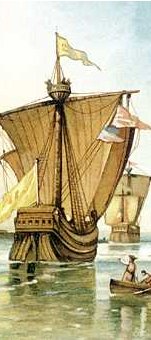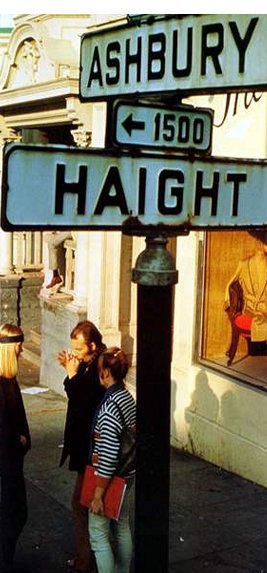Opportunist
Valley Michael Ta
Michael Lewis, born in 1960, graduated from the Isidore Newman
School in New
Orleans. He went on to receive a Bachelor¡¦s degree in
art history from Princeton University
and a master¡¦s degree in economics from the London
School of Economics. Currently,
Lewis writes a column for Slate, the New York Times Magazine, and Bloomberg.
Other bestsellers by him include Liar¡¦s Poker, Moneyball:
The Art of Winning an Unfair Game, and The Blind Side:
Evolution of a Game.
Michael Lewis¡¦s The New New Thing focused on the multibillionaire who pioneered
computers, the internet, and healthcare. This man revolutionized the growth and
development of startup companies in Silicon Valley by
setting precedent after precedent. This man was a modern-day frontiersman, who
did not let the past cloud his judgment or intuition; instead, by concentrating
his efforts on the future ¡V revolutionizing software or components that make up
people¡¦s daily life ¡V he persuaded the populace into ¡§drinking from [his] Kool ¡VAid¡¨.1 This man
was Jim Clark and his occupation was the new new
thing.
Surprisingly for a man so enveloped in
the future, Clark possessed a colorful past. In the
first five chapters of the novel, Lewis reveals that Clark
was expelled from high school for shouting an expletive at his English teacher;
shortly after, he joined the United States Navy, but there, he found life at
sea horrendous ¡V abused, mistreated, humiliated by higher ranking officials.
Seeking vindication, Clark took the Navy¡¦s aptitude test
where he showed exemplary abilities in math. Amazing
himself and others, he was assigned to teach algebra to new recruits; during
this time, he enrolled in night classes at Tulane
University and earned his Ph. D in
eight years. According to Lewis, Clark was married at
least two times and had two daughters. However, his both his wives had left him
to look for a more ¡§settled life¡¨ as he traversed the country teaching from one
university to another.2 Because of his turbulent past, Clark to
refrained from discussing it. In fact, every time Lewis tried to bring up the
subject Clark answers, ¡§that¡¦s boring ¡K the past I don¡¦t
really [care] about the past.¡¨3 After all, his major concern was
always looking for the big picture, looking for ways to change what was around
him, looking for ways to create a ripple in the world with him in the center.
The next few chapters discuss Clark¡¦s
first startup company at Silicon Valley, Silicon Graphics Incorporated (SGI),
which was built on the foundation of the Geometry Engine. The Geometry Engine
was a computer chip Clark designed that made it possible
for computers to process real time, 3-dimensional graphics, a
tremendous feat for the 1980s. The success of this company led to Clark¡¦s
many uphill battles with management and venture capitalists. Clark
was usurped by the venture capitalists ¡V those who financed his ideas ¡V who
gave the CEO seat to Ed McCracken, a classic example of an ¡§organization man¡¨
as Lewis called him.4 McCracken expressed his intolerance for the
engineers and Clark, who was the most demanding of the group. He mainly
directed his attention towards Clark who demanded a larger share of the company
¡V his company ¡V for the engineers. In many ways, Clark
saw the future of industries not in the hands of management, but in those
working to solve the problems and invent the future.
The third quarter of the book deals
with the aftermath of a fiasco with SGI executives involving the future of the
company, when Clark was exasperated with being handled
by management. In 1994, Clark left the company and began
searching or more accurately groping for the future again. With a stroke of
luck, he found Marc Andreesen a youth from the University
of Illinois who wrote the Mosiac program that allowed users to travel around the
internet ¡V an underdeveloped and obscure part of computing. However, Clark
saw the internet as the next portal into success; he realized that because of
Microsoft¡¦s growing monopolization of the personal computer and the Windows
operating system those markets were now closed. Microsoft was only interested
in preserving itself; it did not have to invent the next new thing, only to
¡§tame it¡¨ and to prevent others from interfering.5 In order to get
ahead of the competition, Clark opened a new market and
persuaded the general public that his way was the way of the future.
The final portion of the book dealt
with Clark¡¦s idea for revolutionizing the healthcare
system in the United States.
Clark proposed the magic diamond that linked doctors,
payers, providers, and consumers together. He believed that he could stand in
the middle of the $1.5 trillion a year industry capitalizing on the
inefficiencies of the system. In his endeavor, he contacted Pavan
Nigram, SGI engineer hired by Clark,
who was told to leave SGI and to organize a team of bright engineers. It did
not matter that not one of the engineers on the team knew a thing about U.S.
healthcare or how the system worked. When interview, Kittu
Kolluri, one of the engineers, said, ¡§no one knew
[anything] about health care.¡¨6 In fact, these men gathered on a
whim because they heard that Clark was leading them.
Their intuition and determination turned to success when Healtheon
went public for a second time, after failing horribly in its first IPO (initial
public offering). With this, Clark has successfully
created three different companies, each with a net worth of over a billion
dollars, from scratch.
Portraying Clark
and his experiences, Lewis focused on the probing of the unknown for new ideas
that occurs on the economic frontier. He compared Silicon Valley
in the 1990s to Wall Street of the 1980s. Lewis portrayed how ¡§Wall Street
seems like a low stakes poker table¡¨ compared to the hustle and bustle of
Silicon Valley.7 The increasing number of internet startups and
firmly established companies such as Microsoft, Intel, Oracle, and Apple
contributed largely to this change. Lewis¡¦s target for this evolution in U.S.
economics was Jim Clark. There were few men like Clark
who were revolutionizing the industry; they search blindly for what would
become the next leading innovation that would sweep the consumer market. Their
resources, the most important men ¡V the engineers ¡V who made things happen,
were heavily concentrated on the west coast at Silicon Valley.
It was only natural for Lewis to choose Clark for his
focal point when discussing how to arrive at cutting-edge innovation.
Lewis presented Clark
as a man with no idea what the future holds for him. Clark
can only guess what the next great innovation will be. However, unlike many, Clark
had the drive to risk everything he had on the unknown. In this respect, much
of Lewis¡¦s novel is about Clark¡¦s risk-taking ventures
that can either pay off or leave him as a fool in the annals of history. With
SGI and Netscape, Clark took something obscure and
underdeveloped and turned it into a focal point of history, making millions in
the process. With his latest venture, Healtheon, Clark
proved that mass integration at the core of human services was the next step.
Using Clark¡¦s optimistic character, Lewis portrays Clark
as the modern day inventor. The American spirit that was seen in the inventors
of the nineteenth and twentieth centuries such as Thomas Edison and Nikola Tesla was reborn in men like Clark.
Lewis admires Clark;
embodying the values that make America
the land of opportunity to foreigners, Clark had the
charismatic charm to win over others. Lewis had just finished writing Liar¡¦s
Poker a novel about the Wall Street boom in the 1980s; this time, he wanted
to focus on how those relatively unknown give ¡§the economy a little push¡¨ to get it going in the right direction.8
Clark¡¦s ability to take high risk payouts amazed Lewis. He emphasized Clark¡¦s
¡§controlling¡¨ personality as a trait that was necessary to take leaps into the
unknown. Clark would not allow anyone to get in the way
of his ideas, especially not the outcries of management or worried investors
after he made millions on Netscape. If this was a craps table, Clark
would ignore the odds and put all his money on snake eyes without hesitation.
Lewis followed Clark
from the Dot Com Bubble of the mid 1990s to turn of the millennium. He followed
Clark on his adventurous journeys out into sea and the
launching of his two multibillion dollar startups: Netscape and Healtheon. By then, Silicon Graphics was already a thing of
the past to Clark, only a reminiscence of his struggles
and vengeance. The 90s were ripe for technology and software development;
Indian programmers graduating from the Indian Institutes of Technology were
flooding the market. Many of the technical schools were financed by first world
nations providing opportunity to the second largest nation in the world at the
time. Admission into one of these highly selective institutes of higher
learning meant ¡§the rest of [one¡¦s] life was guaranteed.¡¨9 Silicon
Valley was one outlet where graduates gathered to land a decent
job; men like Nigram and Kolluri
idolized Jim Clark.
Michiko Kakutani
from the New York Times criticized Lewis book in his article. He writes, ¡§[Lewis]
oversimplifies history for the sake of making that history accessible to the
lay reader.¡¨10 Kakutani believes that
Lewis used the Tom Wolfe approach to ¡§enliven¡¨ the accounts of Clark¡¦s
financial dealings and engineering breakthroughs.11 Lewis made Clark
appear like a genius ¡V a man on an endless search for an unattainable solution
who picked the right time to live to do it. Kakatani
believed Lewis was critical of the organization man, the smartly-dressed and
well-mannered man who talks condescendingly to those working under him.
Overall, Kakutani expressed his general praise at
Lewis¡¦s book as Lewis flushed out the economic revolution created by Silicon
Valley in an entertaining, down to earth way.
In another review from Wired
Magazine, Lakshmi Chaudhry criticizes
the book for its emphasis on money rather than story. She laments that the book
could have been much better ¡V had it not focused so clearly on only one man.
She writes ¡§Lewis wanted to use Jim Clark to tell the tale of Silicon
Valley, but¡K the subject gets in the way of the story.¡¨12
Chaudhry believes that the best moments of the book
was when Lewis gave the spotlight to Clark¡¦s engineers
and other members of his workforce. Reading
about Clark from the excerpts of those working towards
his dream brings out the true nature of Silicon Valley.
In contrast to Kakutani¡¦s review, Chaudhry
believes the book suffers from Lewis¡¦s fascination with obtaining mass amounts
of money.
Lewis doesn¡¦t focus on the minute
details that cloud the minds of engineers and developers. Instead, he gives a
general idea of what is happening at board meetings and brainstorm sessions to
provide an outlook on the big picture. He wants to focus not on what happens at
every leg of the journey but on what steps was taken. He supplemented the
book¡¦s thesis: how did those behind Silicon Valley
achieved their fame and fortune? In addition, Lewis exposed the private life of
Jim Clark. He discusses Clark¡¦s obsession with probing
for the unknown breakthroughs that change people¡¦s lives. Clark¡¦s
previous success and aspiration drove him to launch several illustrious
corporations. He quickly forgets about his successes and rushes into the next
venture.
The reader sees Clark
as a calculating man ¡V many around him label him a maniac. In some respects, Clark
was the anarchist that threatened to destroy the established system. He
overturned the ¡§Graham and Dodd formula¡¨ for determining the net worth of a
company and implemented his own kamikaze style in its place.13 The
initial net worth of Clark¡¦s startups would always be nil; however, within a
year or two, investors and capitalist would be persuaded into investing in a
company with apparently no growth potential or action plan. The only thing
these investors had to hold onto was the words of Clark
and his guarantee that their success would led to unimaginable wealth.
Lewis captures the frenzy of
internet startup companies during the 1990s. Clark saw
that Microsoft had already possessed a horizontal market on personal computers
when he left SGI and started Netscape. Involved in a series of antitrust and
monopoly holding suits against Microsoft, Clark knew
success would not come from continuing the development of computers or
hardware. Instead, it was the internet. The internet was new and fresh offering
users the ability to communicate from around the world. It was the last
stronghold that Microsoft could not command. And, Clark was the first to run
¡§down [this] dark tunnel with no end¡¨ in sight; he would be the first to
capitalize on this obscure market.14 The following economic boom of
the mid 90s made all of Clarks dreams come to fruition; the release of SGI and
Netscape both paralleled the steep raise of the stock market.
But Lewis fails is in his
oversimplification of the economic and technological advancements. He focuses
on the sea voyage of Clark¡¦s computer controlled yacht,
Hyperion, relegating the main story a passenger seat. In these interlay
chapters, Lewis presents Clark as having little to do
with his own startups. Clark was developing software for
his boat even though Healtheon still had no potential
buyer. It wasn¡¦t long into the maiden voyage of the Hyperion across the Atlantic
before Clark felt he ¡§was to die from boredom.¡¨15
Although, Lewis wants the reader to sympathize with Clark,
his ignorance of the startup company and focus on Clark¡¦s
voyage portrays Clark as an arrogant rich man, which,
needless to say, he is not. Many of the Indian Tech graduates that work under Clark
expect that a multibillionaire should be comfortably relaxing behind a mahogany
desk, certainly not out at sea programming his boat.
Michael Lewis portrays Silicon
Valley as different from the developments in the east. The
business there was not dominated by the conformists; instead it was centered on
the developments of engineers, who all possessed one similar characteristic
trait: being ¡§highly oppositional¡¨.16 Clark and his engineers were
adamant men who clearly defined their terms and expectations. They were
different from the compromising men of management; where work centered on black
and white snippets of code. Silicon Valley was a thorn
in the sight of highly organized system of the east. Big changes occurred
rather rapidly. Major corporations usually strive to minimize rapid change that
promotes competition in order to maximize profits. However, due to the Dot Com
or Internet Boom, anybody with a vision for the future and enough financial
backing could alter the course of the economy in one swift stroke.
Through Silicon
Valley, California was a window
into the United States
for the rest of the world. The world saw the United
States as the leader of technological
development and progress; Silicon Valley was the center
this development and progress. Behind the office buildings that littered the
valley, innovators like Jim Clark, engineers, and venture capitalist cook up
the next product to hit the market. With dreams of making the largest profit
margin, the corporations of Silicon Valley rely on the
brightest of not only the nation but the world. Programmers from Europe
and Asia come to practice their trade at a place where
they command more respect than the average blue collar worker. As a programmer
and engineer himself, Clark brought change to Silicon
Valley. He realized the value of the white collar worker before
others did and prioritized their needs. Every one of the men who gave up their
job and security to follow Clark¡¦s simple promise of
¡§[making them] rich¡¨ became multimillionaires after Healtheon¡¦s
second IPO.17
Lewis provides a general
overview of startup companies in Silicon Valley. He focuses on the
development of Jim Clark¡¦s three startups: SGI, Netscape, and Healtheon. In addition, he compares Clark¡¦s success in varied
industries to Clark¡¦s interest in varied hobbies. Clark has taken an interest in seafaring,
piloting helicopters, and programming, mainly for his computerized sail boat.
As Clark¡¦s ambition of becoming the
best grows, likewise will his role in changing the future of the way the world
works. Clark¡¦s newest and latest project would be MyCFO
which seeks to link together the 180,000 decamillionaries
in America under one banking system.
His quest in search of the ¡§perfect boat¡¨ continues.18
1. Lewis, Michael. The New New Thing. New York City:
W. W. Norton & Company, Inc. 2000. 85.
2. Lewis, Michael 46.
3. Lewis, Michael 44.
4. Lewis, Michael 52.
5. Lewis, Michael 193.
6. Lewis, Michael 124.
7. Lewis, Michael 16.
8. Lewis, Michael 15.
9. Lewis, Michael 115.
10. Kakutani, Michiko. ¡§Vision of a Product.¡¨ The New York Times 26 October 1999. 1 June 2008<http://query.nytimes.com/gst/fullpage.html?res=9C02E6DC1438F935A15753C1A96F958260&sec=&spon=&pagewanted=1>.
11. Kakutani, Michiko.
12. Chaudhry, Lakshmi.
¡§¡¦New¡¦ Lewis Book Explores Clark.¡¨ Wired
31
October 1999. 1 June 2008 <http://www.wired.com/culture/lifestyle/news/1999/10/32103>.
13. Lewis, Michael 225.
14. Lewis, Michael 82.
15. Lewis, Michael 209.
16. Lewis, Michael 60.
17. Lewis, Michael 244.
18. Lewis, Michael 268.





















